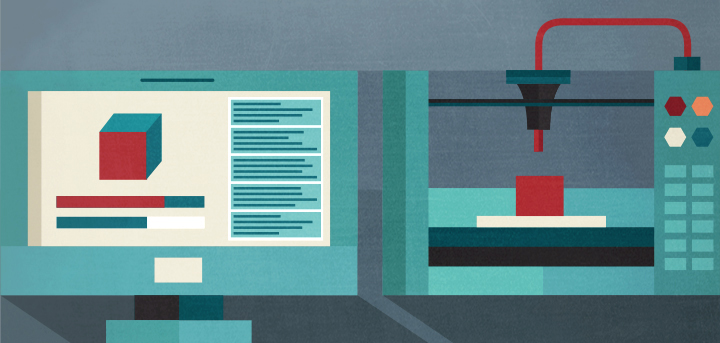The following appears on custommade.com
3D Printing for the Modern Crafts Movement
In the 1980s, most tech geeks were still busting their brains over how to develop personal computers and entertainment consoles for the masses. Little did the public know that in addition to the green MS-DOS screens and 8-bit video games entering the market, three decades later developments taking place behind the scenes would revolutionize the worlds of industry, craft, and art.
3D Printing’s Bulky Beginnings
In 1984, a man named Chuck Hull of 3D Systems Corporation invented the basis for 3D printing software. It had the ability for users to design objects on a computer and digitally “slice” them into extremely thin layers. This STL file format allowed special printers to produce three-dimensional objects by depositing sheets of photopolymers, hardened with the help of UV lasers, one pass at a time. Soon, these “additive manufacturing” robots were able to work with metal, and by 1990 plastic feedstock was introduced by Stratasys under the name of fused deposition modeling (FDM). By the mid-1990s, the Z Corporation helped coin the term “3D printing” with its MIT-developed deposition method, which used inkjet printer heads to lay down liquids on powder bases.
Other interesting articles
- 3D Systems CEO Avi Reichental to Give Closing ‘Fireside Chat’ Keynote at 2015 EFI Connect Conference
- Ricoh announces the global launch of 3D printers
- PrintToPeer & Print Audit: 3D Print Monitoring Webinar replay
Most 3D printing technology remained hidden within the labs of large manufacturing operations for years and out of public use largely due to giant price tags, massive size, and length of time needed to produce an item. It was not until the 2010s that additive manufacturing became more widespread. Due to 3D printers’ increased popularity in the engineering, aerospace, and metalworking industries, the cost of equipment began to drop. Businesses seeking alternatives to injection molding fabrication or looking at new ways to quickly prototype items from architectural models to car parts began to look to 3D printers as efficient, time-saving machines.
Click here to read the rest of the article on custommade.com
